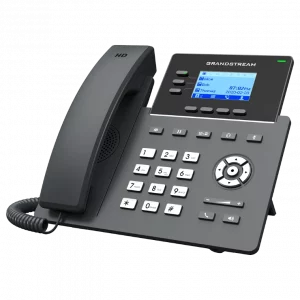
A-Z Guide to Business SIP Lines: Your Complete Overview
Are you a small or medium-sized business owner finding it hard to keep up with modern communication demands? Are outdated systems, limited flexibility, and high costs stifling your growth and productivity? If yes, it’s about time we introduce you to the transformative power of business SIP lines.
Business SIP lines, or Session Initiation Protocol lines, are the digital lifelines of today’s businesses. They are not just a means to communicate, but a potent tool that can redefine how you manage and optimize your business communication. A SIP line, part of the larger Voice over Internet Protocol (VoIP) technology, leverages internet connectivity to provide superior, cost-effective, and flexible communication alternatives to traditional phone systems.
Moreover, business SIP lines are not limited to voice calls alone. Imagine a scenario where on a single line, you can have voice calls, video conferencing, SMS messaging, and other multimedia communication streams running simultaneously. That’s the potential SIP lines bring to your business. More than just a replacement for traditional telephony, SIP lines are enablers of Unified Communications, providing an all-inclusive platform for transmitting various data communications signals over the same phone line.
Integral to the implementation and working of SIP lines is the concept of SIP Trunking. SIP Trunks act like virtual phone lines that can carry calls across the internet. Simply put, if you consider a SIP trunk to be a freeway, a SIP line would be akin to a lane on that freeway. Where each call takes up one SIP line, a SIP truck can accommodate hundreds of SIP lines, thereby defining the capacity of calls your business can handle at a given time.
To Recap:
– Business SIP Line: A virtual phone line that uses SIP and VoIP to deliver voice and other communications over the internet.
– SIP Trunk: The virtual framework that holds multiple SIP lines and defines the capacity of concurrent communication streams.
– Benefits: Cost-effective, scalable, and flexible communication solution enabling voice calls, video conferencing, messaging, and more.
Take a deep breath, as we have a lot more ground to cover. In our complete guide on business SIP lines, we will parse through its basics, benefits, comparison to traditional phone lines, considerations for choosing the right SIP line provider, and the steps to implement it in your business. Let’s get started!
Understanding the Basics of SIP Lines
SIP lines are revolutionizing the way businesses communicate, taking it from the realm of traditional hardwired telephone lines to the digital era. Here’s what you need to know about this transformative technology.
What is a Business SIP Line?
SIP, an acronym for Session Initiation Protocol, is basically a virtual version of your old, traditional telephone line. A business SIP line operates on the cloud, allowing you to make voice calls, send & receive instant messages, and even multimedia files over the internet. This means you’re no longer restricted to just voice calls. You can now hold video conferences, send instant messages, and share multimedia files, all using your business SIP line.
One important thing to note is that one SIP line can carry only one call at a time. So, if your business often has multiple simultaneous calls, you’ll need to ask your provider for multiple SIP lines.
How Does a SIP Line Work?
At the heart of a business SIP line is a system called PBX, or Private Branch Exchange. This is the telephone system used by businesses. A SIP line is essentially a channel that gets connected to your on-premise PBX. This connection then moves to the SIP trunk, which allows you to make calls over the internet. This means you can make local or international calls all through the SIP trunk without any disruptions or restrictions.
The Role of SIP in Business Communication
SIP plays a crucial role in modern business communication. It kicks into action to initiate and end data transmission, which includes voice calls, instant messages, or video chat. The user accesses the SIP trunk through a PBX, IP phone, mobile device, or software phone. When a call is placed, SIP initiates the call with a server and the communication data is sent through the trunk, either through the organization’s communication network or a PSTN, directing the communication data to its destination. When either user ends the call, SIP terminates the connection on the network.
In the world where businesses are rapidly digitizing their operations, SIP lines are the preferred choice for their communication needs. Businesses worldwide are replacing their physical lines with SIP trunks, largely due to their cost-effectiveness and flexibility. Now that you have a basic understanding of what a business SIP line is, let’s delve deeper into the advantages of using SIP lines in your business.
The Advantages of Using SIP Lines in Business
As businesses continue to adapt to the ever-changing digital landscape, one of the most significant shifts has been the move towards SIP lines for communication needs. SIP lines offer a myriad of benefits that can help businesses streamline their operations, reduce costs, and enhance their productivity. Here, we’ll explore the three main advantages of using SIP lines in your business: cost-effectiveness, scalability, and advanced features.
Cost-Effective Communication Solution
The first and most immediate benefit is the cost-saving potential of SIP lines. Traditional phone systems often carry unpredictable bills, especially when international calls are involved. In contrast, a business SIP line operates on a fixed monthly fee system, which makes budgeting for communication costs much easier. Moreover, since SIP lines operate over the internet, there’s no need for physical lines, which means no additional hardware or maintenance costs. The cherry on top? International calls are treated as local calls, allowing businesses to expand their reach without worrying about ballooning communication expenses.
Scalability and Flexibility
Next, let’s talk about the scalability and flexibility of SIP lines. As your business grows, so does your communication needs. Luckily, SIP lines are designed to easily scale up or down based on your business requirements. All it takes is a quick conversation with your SIP provider. There’s no need for additional hardware or complex installations. This not only saves time but also makes it much easier to manage your resources effectively.
Moreover, SIP lines offer unprecedented flexibility. Whether your employees are in the office, working from home, or on the move, they can stay connected and communicate effectively as long as they have an internet connection. This flexibility can significantly boost productivity and ensure business continuity in all situations.
Advanced Features and Functionality
Finally, one of the most compelling advantages of a business SIP line is the advanced features and functionality it offers. Beyond voice calls, SIP lines also support video calls, instant messaging, and multimedia file sharing. These integrated communication services eliminate the need to juggle multiple providers and platforms, thereby simplifying your communication infrastructure.
Moreover, SIP lines can be integrated with other software, allowing for a more streamlined and efficient workflow. For instance, at SIP.US, we offer integration with Microsoft Teams, providing enhanced collaboration capabilities that can significantly boost your team’s productivity.
In conclusion, the advantages of using SIP lines in business are clear. They offer a cost-effective, scalable, and flexible communication solution with advanced features that can help your business thrive in the digital age. In the next section, we’ll compare SIP lines and traditional phone lines to give you a clearer understanding of why many businesses are making the switch.
Comparing SIP Lines and Traditional Phone Lines
Let’s dive into the key differences between SIP lines and traditional phone lines, particularly PRI (Primary Rate Interface) lines, to better understand why there is a significant shift towards SIP lines in today’s business landscape.
The Differences Between SIP Lines and PRI Lines
SIP Lines: Also known as a session or a channel, a SIP line is a virtual connection that delivers voice calls via the Internet using Session Initiation Protocol (SIP) and VoIP technology. This digital approach allows businesses to transmit voice, video, SMS messages, and other data communications signals over the Internet. A business can add as many SIP call paths as needed, providing enhanced flexibility and scalability.
PRI Lines: On the other hand, a PRI line is a physical connection that sends electrical signals over copper wire, directly connecting to the Public Switch Telephone Network (PSTN). Each PRI line can handle 23 calls simultaneously. However, this traditional method lacks the flexibility offered by SIP lines, as it requires substantial hardware and cannot easily scale to accommodate the growing needs of a business.
Why Businesses are Shifting to SIP Lines
Cost Savings: One of the main advantages of a SIP line is its cost-effectiveness. A SIP line requires little to no hardware, making it as much as 30 to 40% less expensive than a traditional PRI phone system. Businesses can add or remove SIP trunks as needed, paying only for the services they use.
Flexibility and Scalability: SIP lines offer unparalleled flexibility. As business needs grow, companies can simply add more SIP call paths. This ability to scale up or down as needed not only enhances operational efficiency but also ensures that businesses only pay for what they use.
Advanced Features: SIP lines support a wide range of advanced features, including video conferencing and SMS messaging. This allows businesses to streamline their communication processes and improve productivity.
Reliability: In the event of a natural disaster, a SIP line can reroute calls from one office to another or deliver voice calls to mobile phones. This ensures business continuity, even in challenging situations.
Integration with Modern Technologies: Lastly, SIP lines are compatible with modern communication platforms like Microsoft Teams, enabling enhanced collaboration capabilities.
At SIP.US, we provide a reliable, cost-effective, and flexible SIP trunking solution that allows businesses to take full advantage of these benefits. By making the switch to a business SIP line, companies can enhance their communication capabilities, improve operational efficiency, and drive business growth.
Choosing the Right SIP Line Provider
After understanding the advantages and workings of a business SIP line, the next crucial step is selecting the right SIP line provider. This choice is a determining factor in the successful transition to this modern communication method.
Key Factors to Consider When Choosing a SIP Line Provider
-
Scalability: Your business needs will grow and change over time. Therefore, the SIP provider you choose should have the capability to promptly adjust its services to match your evolving needs. Whether you need to add or remove lines, this should be completed within a minimal timeframe.
-
Reliability: SIP providers should have a robust, tier 1 carrier network to deliver data and voice services. This network ensures a strong voice signal and high-performing network, essential for maintaining constant, reliable communication. Ensuring reliability also involves having a contingency plan in place for rare cases of network failures, like call forwarding to secondary phones.
-
PBX Support: The ideal SIP provider should offer ample support for your existing PBX system. This ensures that the shift to a SIP line will be smooth and seamless, without any disruptions to your existing communication framework.
-
Pricing: Consider the cost of the services and how they fit into your budget. A great provider offers competitive rates without compromising on quality and reliability.
-
Features: Look for a provider who offers a rich set of features, including call forwarding, voicemail, call transfers, and more. These features can significantly enhance your business communication capabilities.
-
Security: Security is of paramount importance. Your chosen SIP provider should prioritize the security of your communication system, with measures in place to protect against any potential threats.
The Importance of Reliable and Secure SIP Trunking Services
Reliable and secure SIP trunking services are critical to maintaining efficient and effective communication within your business. A reliable service ensures uninterrupted communication, while a secure service protects sensitive business information from potential threats.
At SIP.US, we take both aspects seriously. Our services are designed to deliver consistent high-quality voice signals and our security measures are state-of-the-art. Our commitment to reliability and security means that you can focus on what matters most – running your business.
In conclusion, choosing the right SIP line provider is a critical step towards modernizing your business communication. By considering the factors outlined above, you can make an informed decision that will bring significant benefits to your business.
In the next section, we will discuss the steps to implementing SIP lines in your business and overcoming potential challenges in SIP line implementation. This will guide you through the process of transitioning from your current communication system to a more efficient and cost-effective business SIP line.
Implementing SIP Lines in Your Business
Transitioning to a business SIP line doesn’t have to be daunting. We’ll guide you through the process, offering solutions to potential challenges along the way.
Steps to Implementing SIP Lines
-
Assess Your PBX: Your current PBX system likely supports SIP trunking. If not, an Analog Telephone Adapter (ATA) can bridge the gap.
-
Determine SIP Channels Needed: SIP trunks are sold by the channel, allowing you to pay for exactly what you need. One channel generally supports three to four employees, but high call volume may necessitate more.
-
Check Your Bandwidth: Since SIP Trunking uses the internet for voice calls, sufficient bandwidth is essential for optimal voice quality.
-
Enable Quality of Service on Your Router: Quality of Service (QoS) prioritizes voice traffic over data traffic, ensuring other activities don’t impact the quality of your voice signal.
-
Set Up Your PBX for SIP Trunking: Your SIP trunking provider will provide instructions for configuration.
At SIP.US, we’re here to support you every step of the way. We provide clear instructions and are ready to assist during the configuration process.
Overcoming Potential Challenges in SIP Line Implementation
Transitioning to a new communication system can come with its challenges. However, most of these can be easily managed with the right knowledge and support.
Bandwidth Constraints: If you discover that your internet connection isn’t sufficient for high-quality voice calls, upgrading your internet service may be necessary.
Equipment Compatibility: If your PBX system isn’t SIP-enabled, an inexpensive ATA can facilitate the analog/SIP conversion.
Configuration Uncertainty: Setup might seem complex, but with our guidance, you’ll be up and running in no time. We’re here to support you during the configuration process.
Service Interruption Fears: Testing before fully transitioning allows you to identify and address any potential issues early on, ensuring a smooth switch to your new business SIP line.
At SIP.US, we’re committed to making your transition to SIP as smooth as possible. We’re here to assist you every step of the way, providing you the benefits of a modern, cost-effective, and flexible communication solution.
Conclusion: The Future of Business Communication with SIP Lines
The era of traditional phone systems is rapidly giving way to more advanced technologies. SIP lines, or Session Initiation Protocol lines, are at the forefront of this revolution, proving to be a robust, flexible, and economical solution for business communication needs.
As we move further into the digital age, the advantages of SIP lines become even more apparent. Their ability to consolidate multiple communication channels into one connection significantly enhances efficiency. By routing calls through a proxy server, SIP lines ensure no calls are delayed or lost during peak periods, improving both internal and external communications.
Future-Proofing Business Communication with SIP Trunking
SIP trunking is also set to play a significant role in the future of business communication. With the integration of emerging technologies such as 5G networks, the VoIP/SIP market is expected to experience a considerable boost. This would mean higher definition video content, faster loading speeds, and improved connectivity for wearable devices.
SIP trunking has proven its worth, especially during recent times when remote work has become the new norm due to the COVID-19 pandemic. With the help of SIP, businesses have been able to easily adopt IP telephony services, enabling efficient communication no matter where their team members are located. The adoption of this technology highlights the growing relevance of SIP trunking in our increasingly digital world.
Navigating the Future with SIP.US
At SIP.US, we are excited about the boundless potential of SIP trunking and are committed to providing businesses with the tools they need to harness the power of this game-changing technology. We see a future where SIP trunking is not just about making calls over the Internet but revolutionizing how we communicate and collaborate in the digital age.
Our SIP lines offer an integrated communication system, including voice calls, video conferences, multimedia files, and instant messages. They are scalable, allowing you to adjust the number of users and the bandwidth that controls call efficiency as your business grows.
The future of SIP lines and SIP trunking is boundless and exciting, promising a more connected and efficient world. As we look forward, we are committed to helping your business navigate this rapidly changing digital landscape.
Are you ready to revolutionize your business communication and be part of this exciting future? Explore our services and see how we can help transform your business communication.

With SIP.US as your partner, you can confidently step into the future of business communication, equipped with the power of SIP lines.


